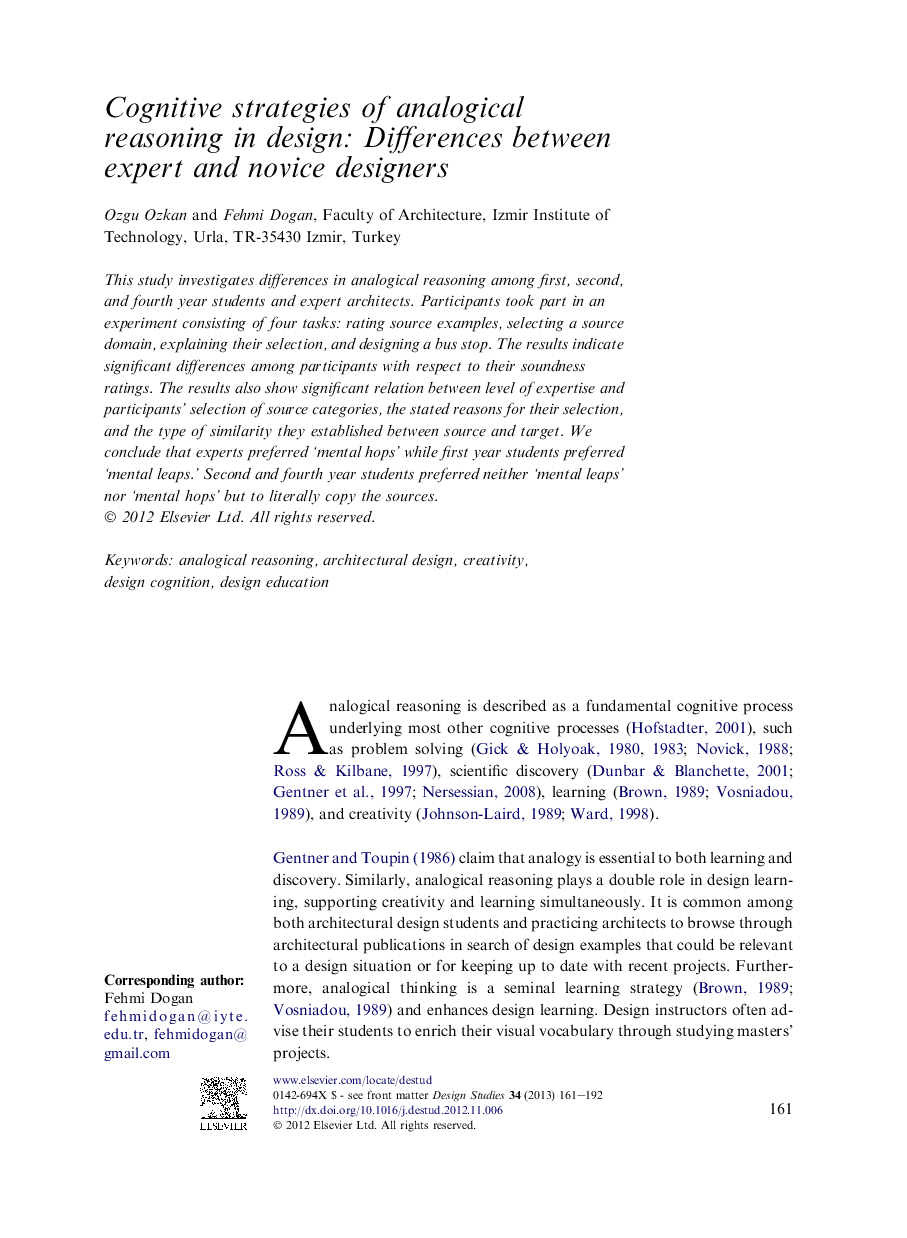| Article ID | Journal | Published Year | Pages | File Type |
|---|---|---|---|---|
| 261630 | Design Studies | 2013 | 32 Pages |
This study investigates differences in analogical reasoning among first, second, and fourth year students and expert architects. Participants took part in an experiment consisting of four tasks: rating source examples, selecting a source domain, explaining their selection, and designing a bus stop. The results indicate significant differences among participants with respect to their soundness ratings. The results also show significant relation between level of expertise and participants' selection of source categories, the stated reasons for their selection, and the type of similarity they established between source and target. We conclude that experts preferred ‘mental hops’ while first year students preferred ‘mental leaps.’ Second and fourth year students preferred neither ‘mental leaps’ nor ‘mental hops’ but to literally copy the sources.
► Differences in analogical reasoning among students and expert architects. ► Experts select near domain while freshmen select distant domain. ► Design process the primary factor for experts; originality/aesthetic for freshmen. ► Experts establish structural similarities; freshmen establish superficial similarities. ► Experts go for ‘hops;’ freshmen for ‘leaps;’ sophomore and senior for neither.
